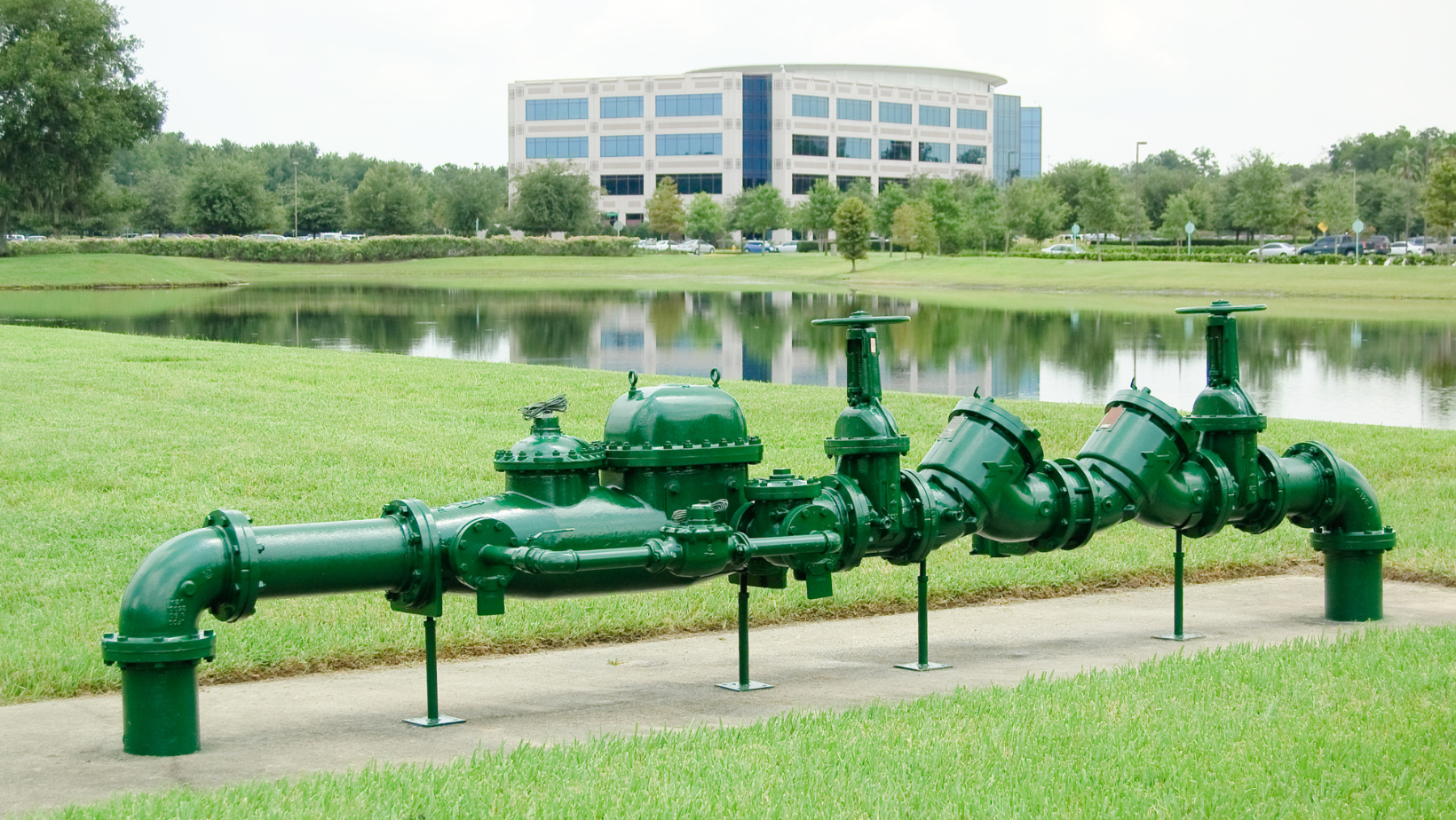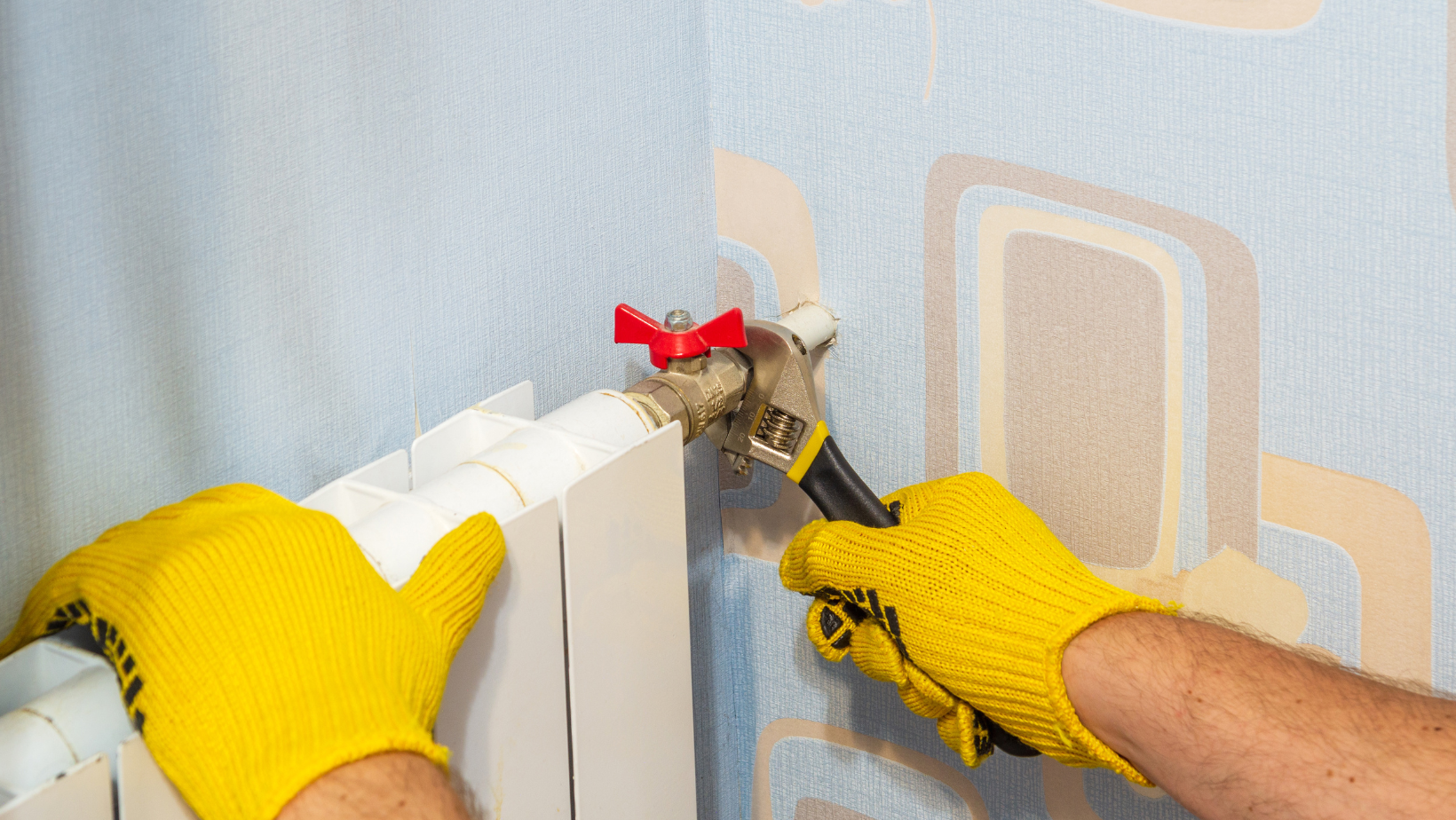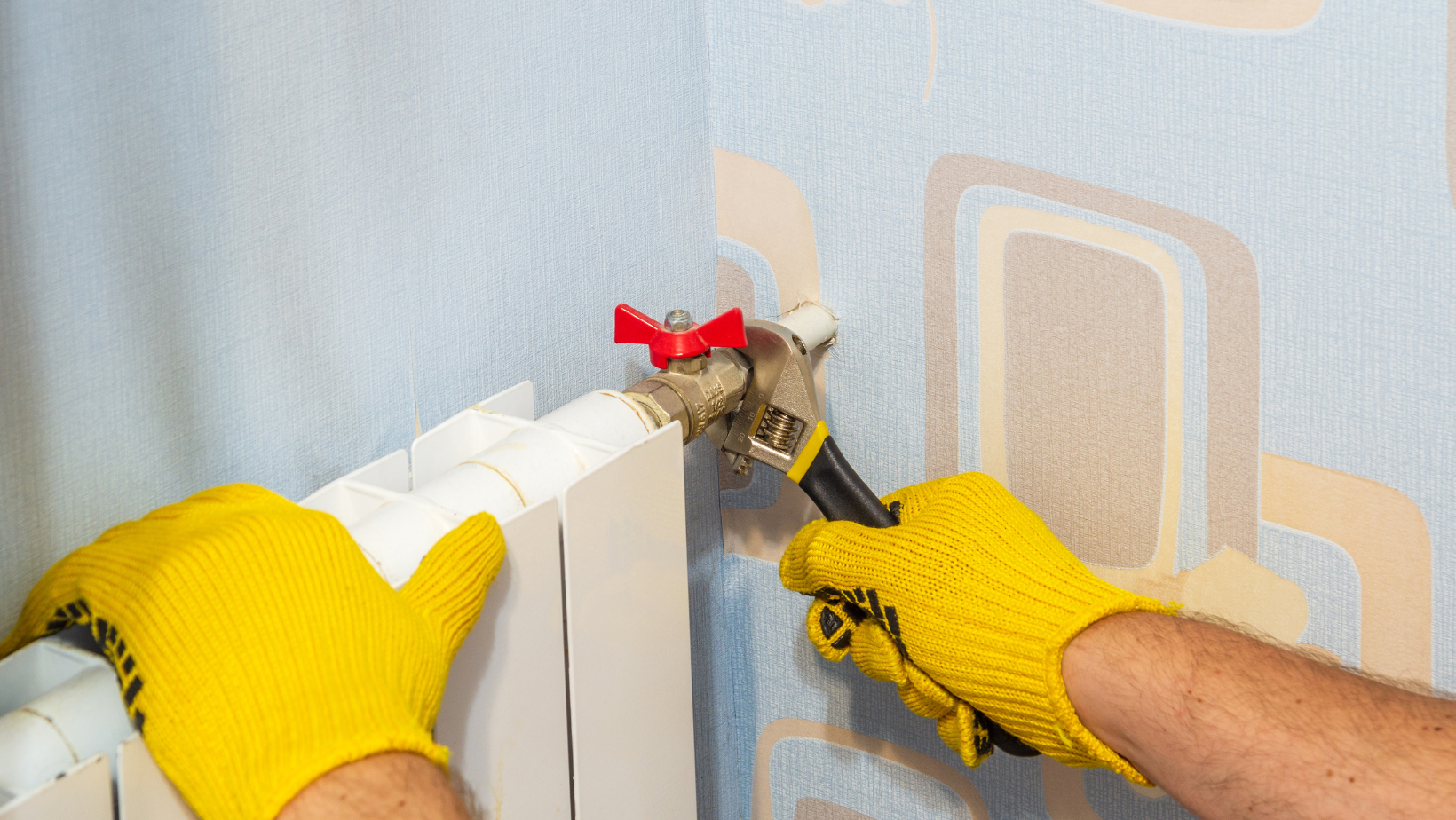
Backflow preventers are integral parts of our plumbing systems, silently ensuring the purity of our water supply by preventing contaminated water from flowing back into clean water lines. But like any mechanical system, these silent guardians must undergo regular testing to ensure they remain in perfect working order. Inadequate testing could lead to system failures and significant health risks due to water contamination.
But how often should these devices be tested? Is there a standard guideline, or does it vary based on the property type? This article addresses these pressing questions and provides comprehensive information on the frequency of testing backflow preventers. Stay with us as we delve deeper into this crucial subject to help keep your water supply clean and safe.
What Are Backflow Preventers?
Backflow preventers are devices installed on plumbing systems to prevent water from flowing in the wrong direction and contaminating clean water sources. These fixtures act as a one-way valve, shutting off when contaminated water attempts to flow back into uncontaminated supply lines. Backflow preventers can be found in residential and commercial settings, with different types used for different applications.
For example, pressure vacuum breakers (PVBs) are commonly used in outdoor irrigation systems to prevent untreated water from entering the potable water supply. Reduced Pressure Principle backflow preventers (RPZs) are more sophisticated devices in commercial and industrial settings designed to protect drinking water from contaminants.
What is the Frequency of Testing Backflow Preventers?
The frequency at which backflow prevention devices should be tested depends on their type, installation location, and potential risks associated with contamination. For example, in the UK, PVBs must be tested annually. On the other hand, RPZs require more frequent testing as they are more complex and have higher contamination risks associated with them.
According to the Environmental Protection Agency (EPA), backflow prevention assemblies should be tested at least once every six months. It's important to remember that this requirement may vary based on state requirements, so always check with local authorities before scheduling a test.
Factors To Consider When Performing Backflow Preventer Inspection
A few factors should be considered when deciding on the frequency of backflow preventer testing. These include :
Type of Backflow Preventer
The type of backflow prevention device installed in your system can significantly influence the frequency of testing required. Different types of backflow preventers have varying levels of complexity, with some more prone to failure and contamination risks than others. For instance, consider an RPZ backflow preventer.
These are complex devices extensively used in commercial and industrial settings with a high potential for water contamination. The complexity of their design, coupled with the high-risk environment they operate in, necessitates more frequent testing, often recommended to be biannual. On the other end of the spectrum, simpler backflow preventers like the PVBs often installed in residential settings and used primarily for irrigation systems may require less frequent testing, typically once a year. It's crucial to understand the function, reliability, and potential risk factors associated with your system's particular type of backflow assembly to determine an appropriate testing schedule.
Water Quality
Water quality is another crucial factor to consider when determining the testing frequency for backflow preventers. More frequent testing may be necessary if your property is in an area with a history of poor water quality or is prone to contamination risks. Poor water quality could be due to heavy industrial activity nearby, high agricultural runoff, or a compromised municipal water supply.
For example, if your commercial property is near a large agricultural area where fertilizer is used, these chemicals can seep into the groundwater that feeds into your water supply. In such circumstances, the backflow preventer is your last defense to prevent contaminated water from reaching your potable water system. As such, it may require frequent quarterly testing to ensure it functions optimally and safeguards your water supply against potential contamination.
Frequency of Use
When determining the testing schedule, the frequency with which your backflow preventer is used should also be considered. If your property uses a large amount of water, for instance, due to frequent irrigation or industrial processes that require large volumes of water, it may need more frequent testing than one that uses minimal amounts of water.
The same applies to residential settings with extensive irrigation systems or multiple water-fed appliances requiring constant pressure. More frequent testing is recommended to ensure the backflow preventer remains in peak working condition and continues providing adequate protection against contamination.
Age of Backflow Preventer
The age of the backflow preventer also plays a significant role in determining how often it should be tested. With time, parts may wear out or become damaged, reducing their effectiveness and increasing the risk of contamination. As such, older backflow preventers require more frequent testing to ensure they remain reliable and capable of protecting your water supply.
Maintenance Practices
The maintenance practices you employ around your backflow preventer also affect the frequency of testing required. Regular preventative maintenance, such as parts inspection or device cleaning, can help prolong its lifespan and ensure it remains in peak working condition. As a result, fewer tests may be needed to ensure its reliable performance over time.
Regular maintenance also helps detect minor issues early on, allowing for timely repairs before they can cause significant damage or malfunction. This way, you can rest assured that your backflow preventer is in good working order, protecting your water supply from contaminants.
Local Regulations
Local regulation is another important factor to consider when determining the testing frequency of your backflow preventer. You must check with your local regulatory bodies about the specific rules and regulations governing backflow prevention. These regulations are often location-specific and may require more or less frequent testing than international standards recommend.
Local laws may sometimes require backflow preventers to pass through an annual inspection. As such, it's important to understand the frequency required in your particular area before scheduling a test. No matter where you are located, understanding the function and importance of backflow preventers is essential for their effective use. Their key role in protecting potable water systems from contamination cannot be underestimated, making regular testing an important step to ensure their reliable performance.
Benefits Of Regular Backflow Preventer Testing
Regular testing of backflow preventers is essential for a variety of reasons. Not only does it help ensure that your potable water supply remains safe from contamination, but it also brings other benefits, such as:
Reduced Repair and Replacement Costs
With regular testing of backflow preventers, you are less likely to encounter severe malfunctions that necessitate costly repairs or replacements. When a backflow preventer is tested regularly, any minor issues or irregularities can be detected early on. This allows for prompt intervention and rectification before the problem escalates into a severe or irreparable condition.
You can avoid hefty repair or replacement costs that could have otherwise been avoided with regular testing. Furthermore, unexpected backflow preventer failures can disrupt your access to clean and safe water, leading to inconveniences or even business losses if your operations heavily depend on water. Therefore, regular testing saves you money in the long run and ensures your water supply remains uninterrupted and dependable.
Improved Performance and Reliability
Regular testing helps ensure that your backflow preventer always functions optimally and reliably. Prompt detection of minor problems allows for timely repairs, thus keeping the device in peak working condition throughout its lifespan. As a result, you can rest assured that your backflow preventer is up to the task of protecting your water supply from contamination.
In addition, scheduled cross-connection testing helps uncover any underlying issues with the device that you may not have been aware of. Even if the backflow preventer appears to be working properly, unseen problems could remain present, leading to poor performance and greater contamination risks. Regular testing is therefore important in identifying such problems and addressing them promptly.
Complies with Legal Requirements
The testing frequency of backflow preventers is often regulated by local laws and regulations to ensure the safety of potable water systems. As such, annual maintenance helps you comply with your legal obligations and avoid fines or other penalties related to noncompliance. It also helps protect your property from any potential legal complications arising from the misuse or neglect of backflow preventers.
You can avoid legal troubles and protect your property by keeping your backflow preventer testing up-to-date. With a regular maintenance schedule, you can rest assured that your water supply is safe and secure from contamination risks.
Increased Safety
Regular testing of backflow preventers helps keep your water supply safe and secure from contamination risks. By promptly identifying and rectifying any minor problems with the device, you can ensure that it always remains in peak working condition. This is especially important for areas using large amounts of water, such as businesses or residential settings with irrigation systems or multiple bathrooms.
Regular testing helps avoid accidental backflow incidents that could lead to long-term contamination of your potable water supply. With a reliable backflow preventer and cooling towers, you can rest assured that your water supply is safe and secure from potential contamination risks.
Improved Lifespan
Regular testing and maintenance of backflow preventers help extend their lifespan by identifying potential issues early on and addressing them promptly. This helps avoid significant malfunction or damage to the device that could otherwise require costly repairs or replacements. It also helps to double-check your backflow preventer to ensure it is always working in peak working condition, allowing for better performance and reliable protection of your potable water supply.
Timely Detection of Hidden Issues
Regular testing helps identify any hidden issues with the backflow preventer that could not have been detected otherwise. This is especially important in cases where the device appears to work normally on the surface. Still, underlying problems may remain present, needing prompt attention before becoming more serious.
Testing also helps uncover any signs of wear and tear, enabling you to take corrective action before the problem becomes more serious. Regular testing is therefore essential for ensuring that your backflow preventer always remains in peak working condition and can reliably protect your water supply from potential contamination risks.
Reduced Contamination Risks
Regular testing of backflow preventers helps reduce the risk of contamination to your potable water supply. It ensures that minor problems or irregularities are identified and addressed before they escalate into severe conditions. This guarantees that your water remains safe and secure from potential contamination risks.
Drawbacks of Neglecting Backflow Preventer Testing
Regular testing and maintenance of backflow preventers are essential for various reasons. When neglected, it could lead to several issues, such as:
- Unreliable Performance: Without regular testing, underlying issues with the device may remain present without you being aware of them. This can cause the backflow preventer to fail unexpectedly, leading to negative pressure and contaminated water.
- Costly Repairs or Replacements: Without timely detection of minor problems, the device may suffer severe malfunction or damage that necessitates costly repairs or replacements.
- Legal Compliance Issues: Neglecting backflow preventer testing could violate local laws and regulations. This could lead to expensive fines or other penalties related to the misuse or neglect of backflow preventers.
Things To Avoid During Backflow Preventer Inspection
When backflow testing, there are certain practices that you should avoid doing to ensure its proper functioning and performance. These include:
Avoid Tampering with the Device Without Professional Guidance
If you're not a certified backflow inspector, avoiding tampering with your backflow preventer is crucial. These devices are intricate and require professional handling for proper operation. Unqualified tampering can lead to serious malfunctions, potentially causing your device to fail its purpose of protecting your potable water supply from contamination.
Such actions may void your device's warranty, leading to additional costs in the event of a malfunction or damage. Therefore, it's best to leave any adjustments, repairs, or replacements to certified professionals with the expertise and knowledge to handle such tasks effectively. Remember, preserving the integrity of your backflow preventer is key to ensuring the safety and cleanliness of your water supply.
Do Not Use Corrosive Cleaning Agents to Clean the Device
Never use corrosive or abrasive cleaning agents to clean your backflow preventer. Such materials can damage the delicate internal components of the device, potentially causing it to malfunction and fail its purpose of protecting your potable water supply from contamination. Instead, use a soft cloth dampened with mild detergent and warm water for routine maintenance. For tougher stains, follow the manufacturer's instructions carefully to avoid damage.
Do Not Neglect Scheduled Maintenance and Testing
Never neglect scheduled maintenance or testing of your backflow preventer. Regular inspection and servicing are essential for preserving its performance, ensuring that the backflow prevention program continues to protect your potable water supply from contamination risks. For this reason, following the manufacturer's guidelines for maintenance and testing schedules is important. Neglecting regular inspection and servicing can lead to severe malfunctions or damages, potentially causing your device to fail its purpose of protecting your water supply from contamination risks.
Avoid Overlooking Any Signs of Wear or Damage
Inspect your backflow devices for wear or damage during routine maintenance. Any minor issues should be addressed promptly before they escalate into more serious conditions. Failing to do so can lead to significant damage or malfunction, potentially compromising the protection offered by your device and resulting in contaminants entering your potable water supply.
Don't Postpone Repairs or Replacements
Any repairs or replacements needed for your backflow device should be done immediately. Postponing such tasks can lead to severe damages and malfunctions, compromising the protection offered by the device and contaminating your potable water supply. As soon as you identify any signs of wear or damage, address the issue promptly.
Do Not Rush Through the Testing Procedure
When testing your backflow preventer, don't rush through the procedure. Take your time and follow each step carefully to ensure the device functions properly. Neglecting any important steps or rushing through the process can compromise the accuracy of the results, leading to unreliable performance and potential contamination risks.
Conclusion
Testing backflow preventers is essential for ensuring your potable water supply's reliable performance and protection. Regular testing helps identify any underlying issues that may go unnoticed, enabling you to take corrective action before the problem becomes more serious. It also helps uncover any signs of wear or damage, allowing you to replace or repair the device before it fails its purpose of protecting your water supply from contamination risks.
If you need help with testing, maintenance, or repairs of backflow preventers, contact a certified professional for assistance. They will have the expertise and knowledge required to handle these tasks effectively, ensuring the integrity and reliability of your device. With their help, you can be assured that your potable water remains safe and secure from contamination risks.




